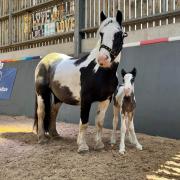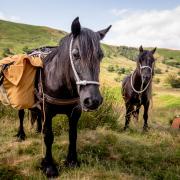Richmal Crompton's most famous creation - Just William - is to be brought back to life, 40 years after the Bury-born author's deathWords by Amanda Hodges
William Brown, Richmal Crompton's schoolboy rebel, dwarfed the many novels she wrote for adults. William's tales were initially conceived as 'potboilers' that first appeared in a 1919 short story but by 1922 burgeoning popularity prompted the book 'Just William' and his humorous adventures continued to delight adults and children alike until Richmal's death in 1969.
Now the BBC is working on a new series of Just William adaptations to be screened next year which will help William reach a new audience.
Born in Bury in 1890, Richmal Crompton Lamburn was known as Ray, the daughter of Clara and Edward Lamburn, the latter a cleric and schoolteacher who taught at Bury Grammar School. Edward was an affectionate and erudite father, who instilled in both Crompton and her sister Gwen an insatiable appetite for knowledge, a zest not shared by their less bookish brother Jack, who provided the inspiration for the character of William.
Crompton herself was emphatically cerebral, winning a scholarship to Royal Holloway College and becoming a classics teacher. By all accounts the slim, light-haired girl later became a gifted and sympathetic teacher, possessing infectious enthusiasm and a keen sense of humour.
In 1896, soon after the death of 14-month-old Phyllis, the family moved to a more spacious house which faced directly onto fields hedged by woods. Finances were straitened so, in order to supplement income, two day boarders from Bury Grammar came to lunch daily in term-time and Clara managed with the help of a maid. The Lamburn girls attended local Dame schools when very young, later moving to St Elphin's, then based in Warrington.
The attic soon become Richmal's private refuge, a place the sensitive, imaginative child could scribble down stories and poems uninterrupted, a time she reflected upon fondly in the 1960s. 'Before I went to boarding school I used to edit a magazine called The Rainbow... its circulation was confined to two. I used to read it to my small brother and my beloved rag doll sitting on two doll-size chairs in the attic.'
The family was closely knit although there was tension between father and son. Edward was disappointed by his son's academic lethargy and one wonders if some William stories capture the flavour of her own childhood in Bury. Long-suffering Mr Brown once comments: 'The human boy is given to us as a discipline. I possess one. Though he is my own son I find it difficult to describe the atmosphere of peace and relief that pervades the house when he is out of it.'
William appeared in print at a time when sentimentality dogged depictions of children and he must have been a revelation, a whirling dervish of spirited rebellion, a boy for whom adults 'are stumbling blocks placed in his path by a malicious fate'.While self-expression was encouraged in the Lamburn household, little girls of the late Victorian era were not expected to play too boisterously so although Richmal would have had plenty of time to enjoy the countrified areas around her home, the adventurous descriptions in William The Conqueror of the occasions the boys tramp the countryside in search of adventure would more accurately have reflected the opportunities open to her brother Jack. Exploring fields, farms and woodland, by the end of one afternoon William's gang, the Outlaws, 'had raced and rambled and scrambled and wrestled and climbed trees and trespassed to their hearts' content'.It was at school that the world expanded for Richmal. At 11 she followed Gwen to St Elphin's at a time when serious education for girls was finally receiving proper consideration. As well as proven academic prowess Richmal began playing hockey, writing enthusiastically and, in time-honoured schoolgirl fashion, joined a secret society where members posted stories beneath the roots of an ancient tree in the garden.Legends of secret passages and supernatural sightings abounded at the former convent and Richmal retained a lifelong interested in the supernatural, spooky yet spurious sightings often appearing in the William books. 'I can think' William went on meditatively, 'of quite a lot of people I'd like to haunt when I'm dead - ole Markie [his headmaster] an' Farmer Jenks...it'd be more fun than anythin' - even a pirate.' 'I dunno' said Douglas, 'they can't eat.'After a scarlet fever outbreak in 1904 the school's premises moved to Derbyshire where facilities were greatly improved. 'It was larger and healthier and we loved the moors but - we missed our ghost,' remembered Richmal in later years.She would flourish here in all respects, nurturing her passion for classics, contributing to the school magazine and slowly finding the literary voice that came to fruition a decade later when the first William story appeared without fanfare in Home magazine. Ninety years on William's appeal lies undiminished, the wit and effervescent humour that characterise Richmal's stories remaining as potent as ever.
To buy any of these books at the Great British Life Book Shop click here


























